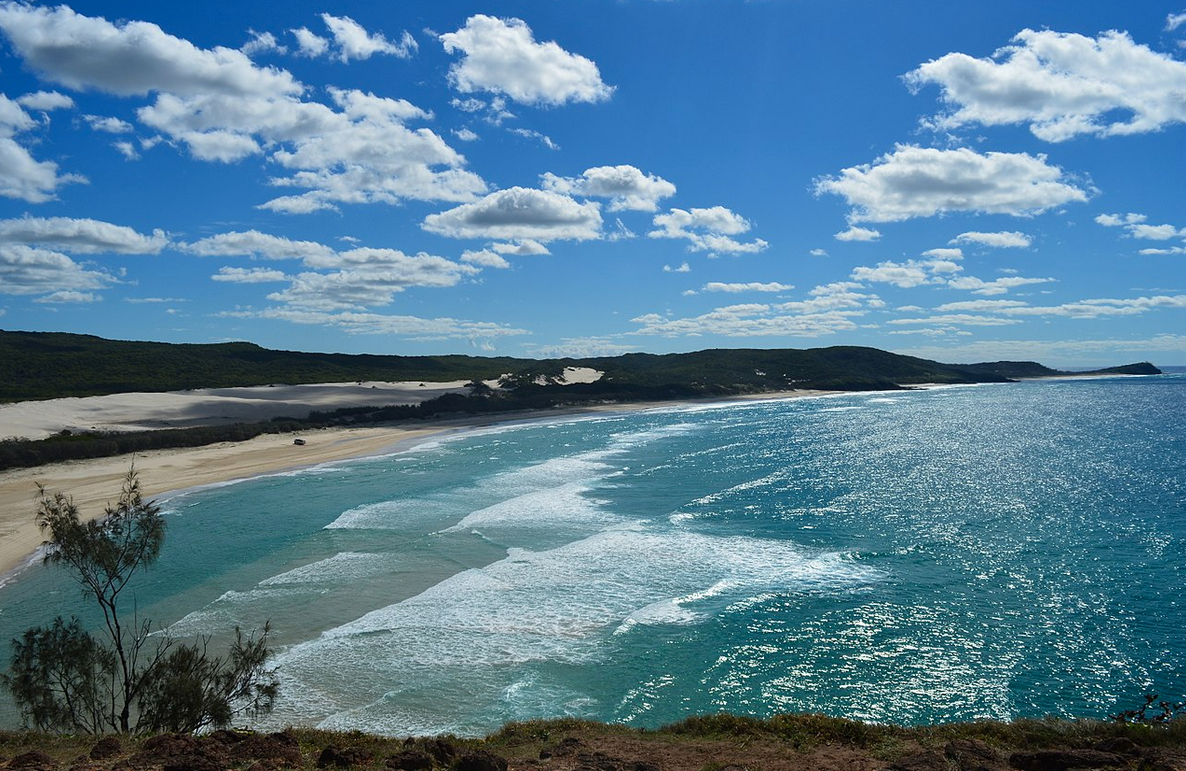Fraser Island (K’gari) is a World Heritage-listed island along the south-eastern coast in the Wide Bay–Burnett region, Queensland, Australia. The island is approximately 250 kilometres north of the state capital, Brisbane, and is within the Fraser Coast Region local government area.
Fraser Island |
K’gari

Government evidence of impact of climate change:
-
IUCN World Heritage Assessment, Fraser Island, 2014
Overall THREATS High Threat Increased visitation and climate change are the two major threats to the property.
Climate change may already be responsible for sandblows (naturally devoid of vegetation) being colonized by encroaching vegetation (SOC; 2002 www.fido.org.au).
Potential Threats High Threat Climate change seems to be irreversibly changing some of the physical properties of the site.
Climate change has already been demonstrated as a threat to several of the values of the property; and will probably gain in importance in the future.
Climate change will also favour the spread of more banal or invasive species (SOOUV 2012 SOC; 2002 www.fido.org.au).
-
IUCN World Heritage Assessment, Fraser Island, 2017
Overall THREATS High Threat Increased visitation and climate change are the two major threats to the property.
Temperature extremes High Threat Inside site; throughout( 50 ) Outside site Climate change may already be responsible for sandblows (naturally devoid of vegetation) being colonized by encroaching vegetation (SOC; 2002 www.fido.org.au).
Potential Threats Very High Threat Climate change seems to be irreversibly changing some of the physical properties of the site.
Climate change has already been demonstrated as a threat to several of the values of the property; and will probably gain in importance in the future; with potential impacts on species composition; coastal processes; fire regimes and hydrological processes.
Temperature extremes Very High Threat Inside site; throughout( 50 ) Outside site Overall; climate change impacts including higher temperatures; rising sea levels; and more frequent and extreme weather events pose a very high potential threat to species composition; coastal processes; fire regimes and hydrological processes (Gontz et al 2015; Wardell Johnson et al 2015).
Climate change may impact on long term hydrological processes operating at the property scale.
-
IUCN World Heritage Assessment, Fraser Island, 2020
Overall THREATS High Threat Increased visitation and climate change are the two major threats to the property.
Temperature extremes High Threat Inside site; throughout( 50 ) Outside site Climate change may already be responsible for sandblows (naturally devoid of vegetation) being colonized by encroaching vegetation (SOC; 2002 www.fido.org.au).
Potential Threats Very High Threat Climate change seems to be irreversibly changing some of the physical properties of the site.
Climate change has already been demonstrated as a threat to several of the values of the property; and will probably gain in importance in the future; with potential impacts on species composition; coastal processes; fire regimes and hydrological processes.
Temperature extremes Very High Threat Inside site; throughout( 50 ) Outside site Overall; climate change impacts including higher temperatures; rising sea levels; and more frequent and extreme weather events pose a very high potential threat to species composition; coastal processes; fire regimes and hydrological processes (Gontz et al 2015; Wardell Johnson et al 2015).
Climate change may impact on long term hydrological processes operating at the property scale.
-
Great Sandy Management Plan 1994 - Queensland Government
The flood plume from the Mary River has been identified as a major threat for dugongs due to siltation and death of seagrass within the Great Sandy Straits and southern Hervey Bay.
Minimising the risk of fires is far more cost effective and efficient than fire suppression.


